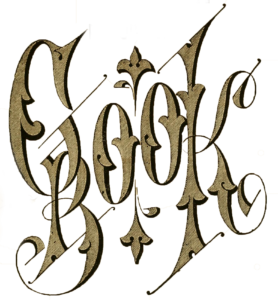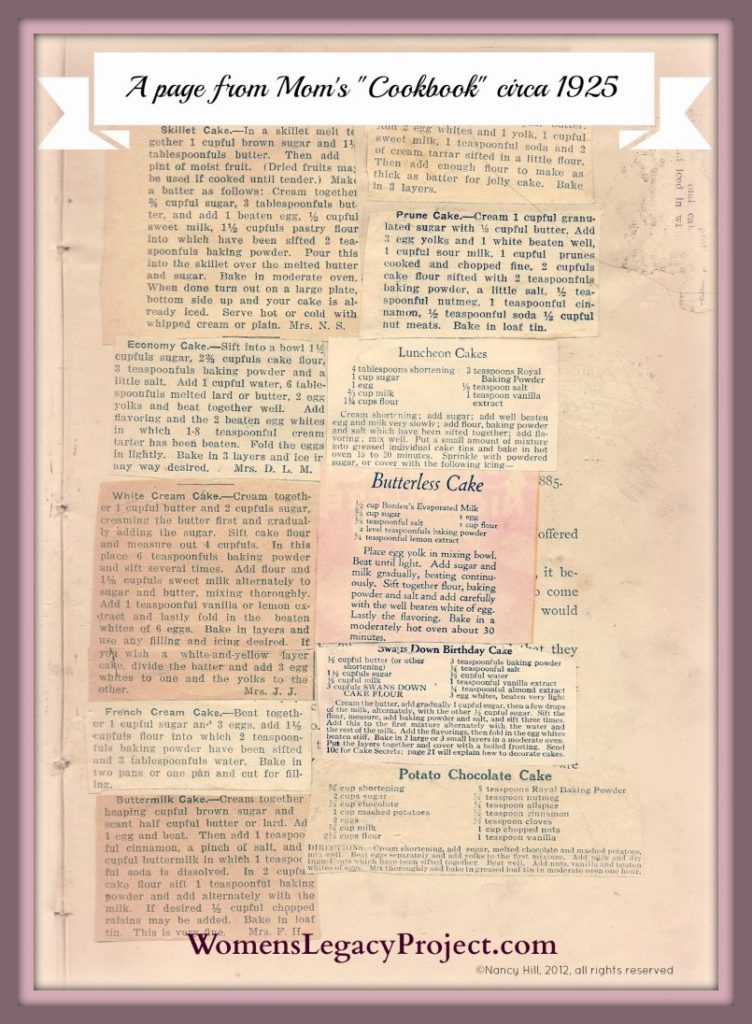I encourage everyone to gather their past in the way that is most meaningful to them. If you want to share aspects of what you have gathered, I recommend digital sharing. A project I made a few days ago can stand alone as a Facebook post or become part of a cookbook and memoir of my mother’s and grandmother’s kitchens. If I do make a book about our recipes, heritage, and tools, I know I will use another image “creation” I snagged and cleaned up from an out of print German cookbook from the 1800s.

This entire topic came up for me when I asked myself, what do I do with a book I found among my mother’s things that was probably a discarded book snagged from an academic rubbish bin. I almost just donated it to a thrift shop without flipping through the pages. What I found was that the original text of the book had been pasted over with other print cut from magazines. It had been turned into a scrapbook, cookbook, or diary sort of blank book.
My mother started school with a slate board and a piece of chalk. Quality paper was not a play-thing for children in the first few decades of the 20th Century. The use of a discarded book as the bones for a new book or project illustrates much about the early-1900s, frugality, play, and what little girls thought about.
I decided to turn a representative page, one that under close scrutiny faintly showed a cursive, penciled-in “Cakes” heading at the top of page. The childish scrawled subject heading did not scan well. So I decided to scan the page, add color, a title banner, and turn the Cakes page of the cookbook my mother made in early grade school.
My mother was a wonderful baker, and it is telling that one of my mother’s acts of play that was preserved for me to discover was a collection of cake recipes. She loved to bake.
I decided to share the modified page here, and eventually I will use it in a book, as a prompt, or as an example for a Women’s History Month series of posts where I and others share posts that are stories about about regular women, such as mothers, grandmothers, aunts and great aunts, or even further back in family history, as well as mentors and influential public figures, and the work they did not just the recipes they used, that is overlooked and in danger of being lost if we do not share it now.

How to:
- I scanned the page and saved a digital copy.
- On picmonkey.com I used free elements of their online graphic-editing software to apply a pinkish wash to the page which took away the drabness of the off-color, sad-looking, yellowed page.
- I watermarked the page with WomensLegacyProject.com so as to guide viewers of the image back to this article, should the image be shared without this accompanying text. I recommend doing this on any images of yours that you share via social media.
- I put a banner and title on the page to guide the viewing experience.
- I also put a © on it as it is totally mine and I really want to only have people who request to use it, use it.
- I added a frame.
- I want people to make their own enhanced digital images of scraps of this and bits of that are meaningful to them. This is just an example of one thing I did to preserve my mother’s childhood project.
Update. 2022. The submissions project, below, was great, but ended several years ago.
More info on the Women’s Legacy Project call for submissions for the project I am coordinating for Women’s History Month may be found at Her Story, a page on this site.
Wonderful ideas here, Nancy! A great way to preserve work from our foremothers that is so easily lost.
Melanie, thank you! I hope you submit something for our Women’s History Month project. In this digital age there is no reason to lose these information rich bits of cool stuff about the women who shaped us.